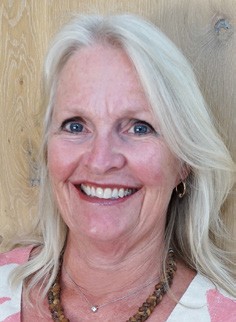THE OPHTHALMIC JOURNEY

Welcome to our eighth special macular disease issue.
The recent approval in Australia of the first treatment for geographic atrophy (GA) has generated enormous interest among optometrists and ophthalmologists, keen to understand more about how they can finally help change vision outcomes for patients who until now had no choice but to lose sight.
Australia is only the second country in the world behind the United States to approve Syfovre (Apellis) for the treatment of GA secondary to age related macular degeneration (AMD). No doubt the world will be just as eager to watch on as our real-world results emerge.
With this in mind, our 2025 special macular disease issue presents the perspectives of several ophthalmologists and provides comprehensive information about GA – from its pathophysiology, and the genetics and risk factors involved in the disease, through to the need for detailed assessment modalities, as well as current and pipeline treatments. Plus of course, we explore strategies for patient communication, including setting realistic expectations.
Beyond GA, this issue takes a careful look at the impact of macular disease on the patients many of our readers care for each day. Michelle Hauschild interviewed artist Jan Francis. As someone who relies so much on her sight to observe the world around her, the diagnosis of AMD presented a terrifying prospect. Macular Disease Foundation Australia (MDFA) was able to guide her through those early weeks and months, and she has since become an enthusiastic advocate of the MDFA’s service.
We all recognise that losing your driving licence at any stage of life can be devastating. For those relying on regular medical visits for sight-saving treatment, the inability to drive adds an extra level of complexity and reliance on others. But as an eye care professional, how do you tell the patient in front of you that it’s time to hand over the keys? Associate Professor Wilson Heriot and Associate Professor Meri Vukicevic have some tips to share.
Elsewhere in the issue, we look at how we can break down barriers to treatment for AMD, how to achieve best outcomes when managing AMD in patients with comorbidities, options for intraocular lenses in AMD patients… and more.
Thank you to the team at MDFA for its support in presenting this issue. Enjoy!
MELANIE KELL EDITOR
In the spirit of reconciliation, mivision acknowledges the Traditional Custodians of country throughout Australia and their connections to land, sea, and community. We pay our respect to their Elders past and present and extend that respect to all Aboriginal and Torres Strait Islander peoples today. As a bi-national publication, we acknowledge Māori as tangata whenua and Treaty of Waitangi partners in Aotearoa New Zealand.
contributors
OPHTHALMOLOGISTS
Associate Professor Hemal Mehta MBBS MD (Cantab) FRCOphth is a macular disease specialist and cataract surgeon consulting in Sydney and the New South Wales Central Coast. He writes about managing cataract in patients with neovascular age-related macular degeneration.
Dr Warren Apel
Professor Andrew Chang AM
Dr Amy Cohn
Professor Adrian Fung
Dr Christopher Go
Associate Professor Wilson Heriot
Dr Adrian Hunt
Dr Isabela Martins Melo
Dr Rajeev Muni
Dr Tuan Tran
Dr Sebastian M. Waldstein
Dr Jessica Xiong

OPTOMETRISTS
Dr Margaret Lam BOptom UNSW Post Grad OcTherapy practises optometry at 1001 Optometry in Bondi Junction in Sydney and teaches at the School of Optometry at the University of New South Wales.
Jennifer Chin
Dr Thomas Do

PROFESSION INFLUENCERS
Dr Kathy Chapman BSc MNutrDiet PhD GAICD is the Chief Executive Officer of the Macular Disease Foundation Australia and our guest editor for this edition of mivision. She provides an update on advocacy efforts made on behalf of the macular disease community.
Skye Cappuccio
Dr Alexander Jessup
Carol Kilkenny
Monica Lette
Dr Alexander Maloof
Andrew McKinnon
Dr Long Phan
Rayleen Tamblyn
Associate Professor Meri Vukicevic
